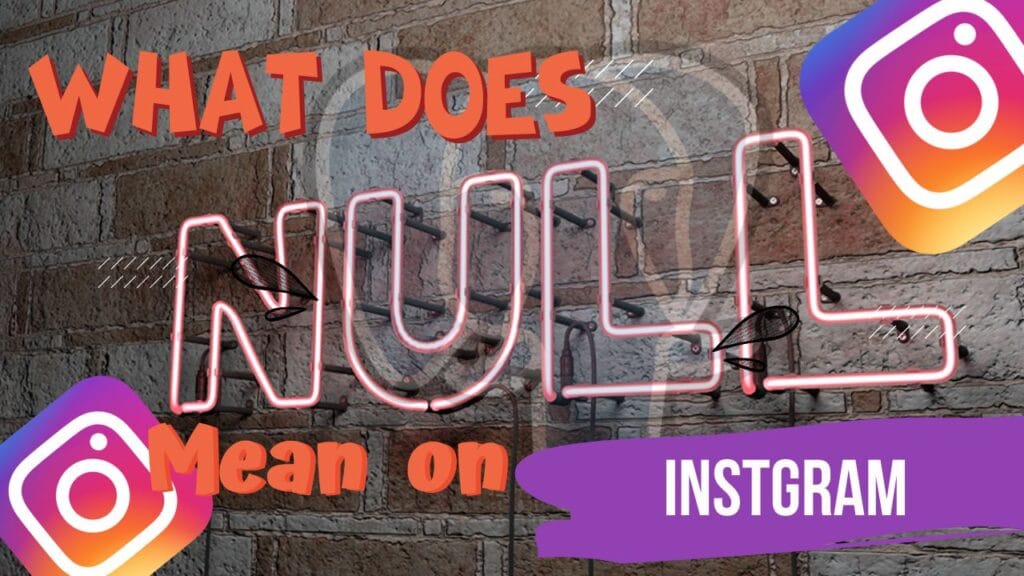Instagram is one of the most popular social media platforms, with millions of active users around the world. As with any platform, there are various terms and concepts that users need to understand in order to fully utilize the platform’s features. One of these concepts is “null” on Instagram. In this article, we will explore what null means on Instagram, how it works, and its implications for users.

What is “Null” on Instagram?
“Null” is a term used to indicate a lack of data or information on Instagram. When a user sees “null” on Instagram, it means that there is no data available for that particular field or attribute. This could be because the user has not filled out that field, or because the information is not available or has been deleted.
For example, if a user sees “null” in the “Bio” section of a profile, it means that the user has not provided any information for that field. Similarly, if a user sees “null” in the “Likes” section of a post, it means that there are no likes on that post.
How Does “Null” Work on Instagram?
“Null” is a feature that is built into Instagram’s programming. When a user does not provide information for a particular field or attribute, the system automatically fills in that field with “null” to indicate that there is no data available.
“Null” can also be generated when data is deleted or becomes unavailable. For example, if a user deletes a post, the likes and comments associated with that post will become “null” as the data is no longer available.
Implications of “Null” on Instagram:
“Null” has several implications for users of Instagram. Here are some of the main implications:
Lack of Information: When a user sees “null” on Instagram, it means that there is a lack of information available for that particular field or attribute. This can make it difficult for users to fully understand and engage with the content.
Data Loss: When data is deleted or becomes unavailable, it is replaced with “null” on Instagram. This can lead to data loss and make it difficult for users to track and analyze their activity on the platform.
Privacy Concerns: “Null” can also be an indication of privacy concerns. For example, if a user sees “null” in the “Bio” section of a profile, it could mean that the user has not provided any information, or that the user has set their profile to private.
Best Practices for Using Instagram
To make the most of Instagram and avoid the implications of “null,” users should follow these best practices:
Fill Out All Fields: To avoid seeing “null” on Instagram, users should fill out all fields and attributes on their profiles and posts. This will ensure that there is no missing data and that users can fully engage with the content.
Monitor Data: Users should monitor their data on Instagram and ensure that all data is accurate and up-to-date. This can help prevent data loss and improve the overall user experience.
Set Privacy Settings: Users should set their privacy settings on Instagram to ensure that their data is protected and only visible to those they choose to share it with. This can help prevent privacy concerns and ensure a safe and secure user experience.
Conclusion:
“Null” is a term used to indicate a lack of data or information on Instagram. It is a feature built into the platform’s programming and can be generated when a user does not provide information for a particular field or attribute, or when data is deleted or becomes unavailable. To avoid the implications of “null,” users should fill out all fields and attributes, monitor their data, and set their privacy settings.